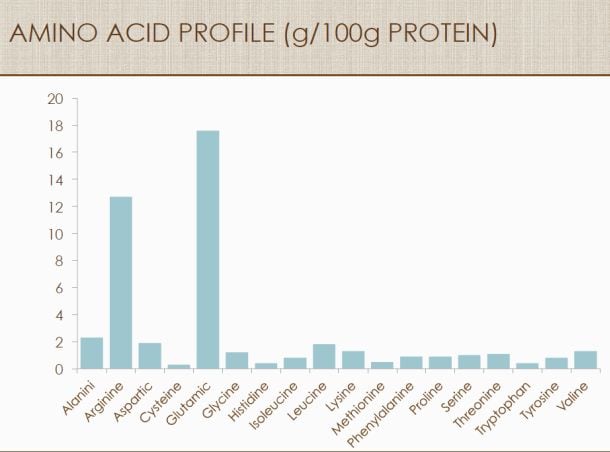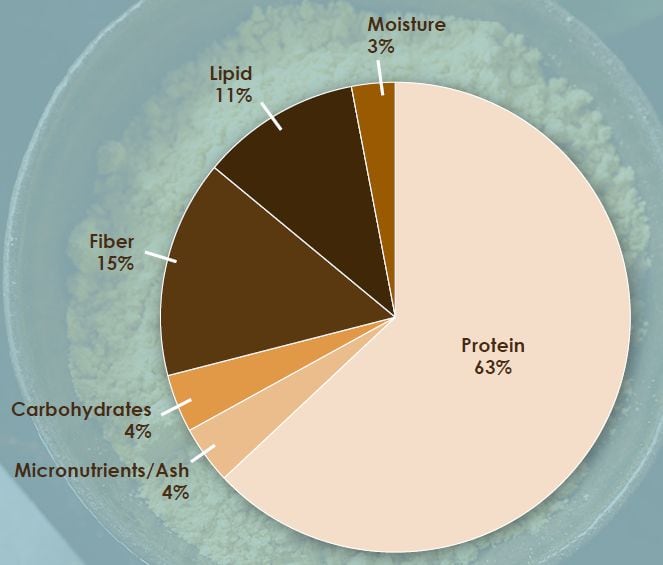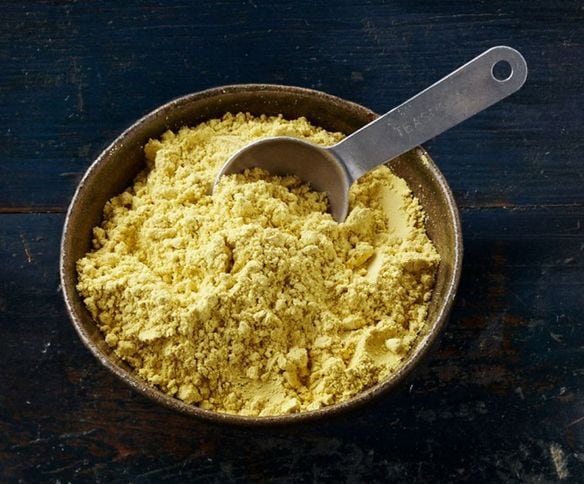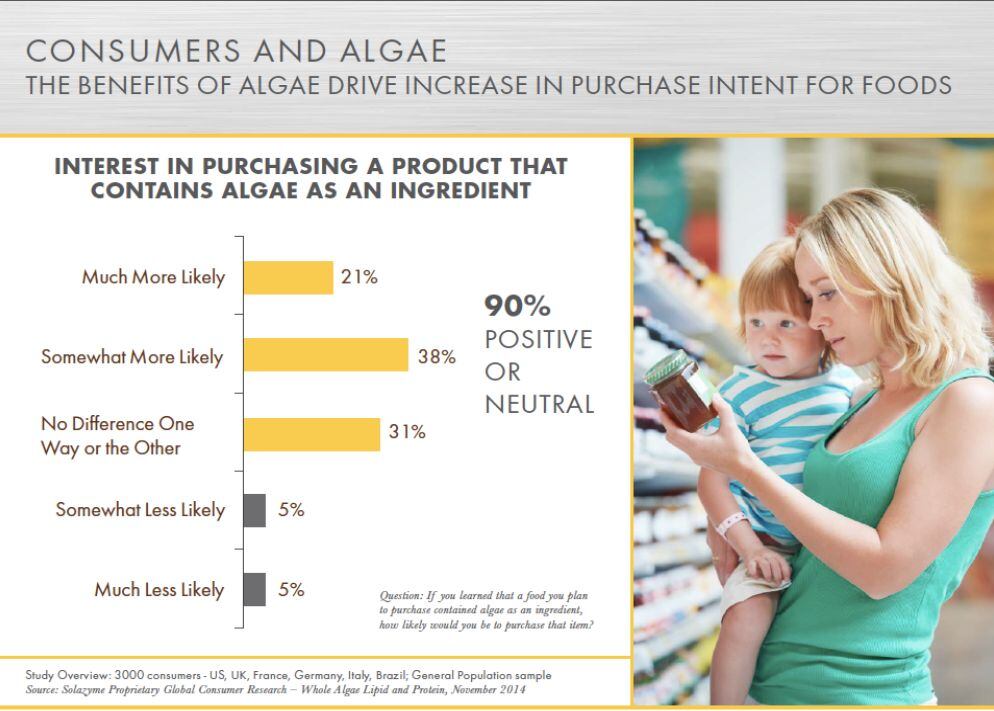While the product development process at big food companies can seem glacially slow if you are trying to commercialize a novel food ingredient, Francisco-based Solazyme says it is finally hitting the ‘rapid adoption phase’ where its AlgaVia whole algae protein is concerned.
AlgaVia whole algae protein - which contains 63% protein, along with fiber, lipids and micronutrients such as lutein and zeaxanthin - is yellow with a slightly nutty taste similar to crushed pistachios.
It is grown from a native microalgae strain that naturally converts sugars (Solazyme currently uses corn dextrose* but can use sugar cane or sugar beet) into oils and proteins via a fermentation process, after which it is harvested, washed, dried and milled into a fine powder.
They are not talking about a protein crisis in the distant future, but right now
The protein, which was subject to a ‘no questions’ letter from the FDA in January, is now in several products on US grocery shelves, while scores more are in the development phase, with partners ranging from start-ups to “leading global food and beverage manufacturers” looking for new vegan, non-allergenic sources of protein, SVP Mark Brooks told FoodNavigator-USA.

“Some of these conversations with tier one food manufacturers we’re actually having jointly with NGOs and even government organizations about how microalgae could be part of nutrition security planning. They are not talking about a protein crisis in the distant future, but right now.”
And while some customers just like the functionality and the fact it’s a vegan source of protein without allergen issues, some larger customers are looking to build a story around microalgae as a superfood and are homing in on the ‘whole food’ angle, as Solazyme’s ingredient also contains fiber and other key nutrients, he said.
“We’ve got projects close to market where algae is actually the hero and they are really looking at the ‘earth’s first superfood’ positioning. We are having these conversations with customers and they are saying, wow, this really is a nutrient-packed whole food ingredient, a superfood.”
Asked about price, he said: "If you look on a price per unit of protein basis, it compares favorably to pea or rice, or increasingly, high quality sources of soy."

We’re really delighted with the traction we’re getting in bakery
As for applications,whole algae protein works well in a broad range of products from nutritional supplements, ready-to-drink beverages, to sports nutrition products and powdered beverages, to sauces, snacks, breads and cereals, he said, although two areas stand out.
“We’re really delighted with the traction we’re getting in bakery in particular as people really like the drop-in nature of the product. But we’re also seeing a lot of interest in ready-to-mix protein powders, which is a really dynamic category right now.

“The fact you can double the fiber as well as the protein content in a cracker by using whole algae protein is really resonating with some customers, while others in the sports nutrition side are building a story around the arginine and glutamate.”
Protein, minus the grittiness
From a technical perspective, Solazyme’s whole algae protein has key advantages over rival protein sources as it does not interact with other ingredients (as the cell wall of the algae remains intact), it is stable in a variety of temperatures and pH conditions, and it does not add viscosity or grittiness, added Brooks.

“You can add protein to a beverage and it will stay drinkable, instead of becoming gulpable.”
Similarly, in a low PH beverage such as tropical fruit juice smoothie, for example, you don’t need to add stabilizers to stop the protein from falling out of the solution, ensuring labels stay clean, he said.
While the slightly nutty flavor can be a bonus in certain applications as firms can reduce sodium or avoid using umami flavors, Solazyme has also developed a more neutral tasting variant (by modifying the drying process) for applications where the flavor might be an issue; meanwhile, a paler colored variant is also under development.
A greener source of protein?
From a nutritional perspective, meanwhile, whole algae protein is highly digestible, and has a full complement of amino acids (particularly arginine and glutamic acid), which has sparked interest from firms in the sports nutrition space, he added.
However, what really gives it the edge over rivals is that it is vegan, non-allergenic, non-GMO, and arguably ‘greener’ than rival sources of protein in that it can effectively be made to order – in a matter of days – does not require the cultivation of large tracts of agricultural land, and is highly scalable, said Brooks.
“It’s got four times the yield per hectare vs soy [this figure is based on the use of sugar beet as the feedstock].”
Consumers are open to new sources of protein

But do consumers want to eat algae?
Extensive consumer research (Solazyme recently spoke to 3,000 consumers in several countries) suggests they are certainly willing to try, according to Solazyme, which has also developed a suite of algae-based ingredients from high-oleic algae oil and structured fats, to AlgaVia branded whole algae flour – a lipid-rich ingredient that is currently gaining a lot of attention as an egg replacer.
“Even when you don’t give consumers any information,” said Brooks, “they are positive to neutral, and then when you provide some description, the purchase intent goes up.”
*Asked whether the corn dextrose used as the feedstock was derived from genetically engineered corn, Solazyme said: "We have conducted PCR testing by a third party lab to assess the dextrose used as our feedstock to ensure it does not contain GMOs."
